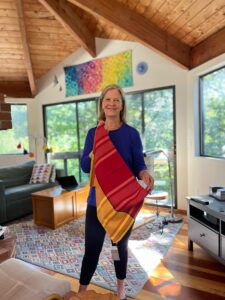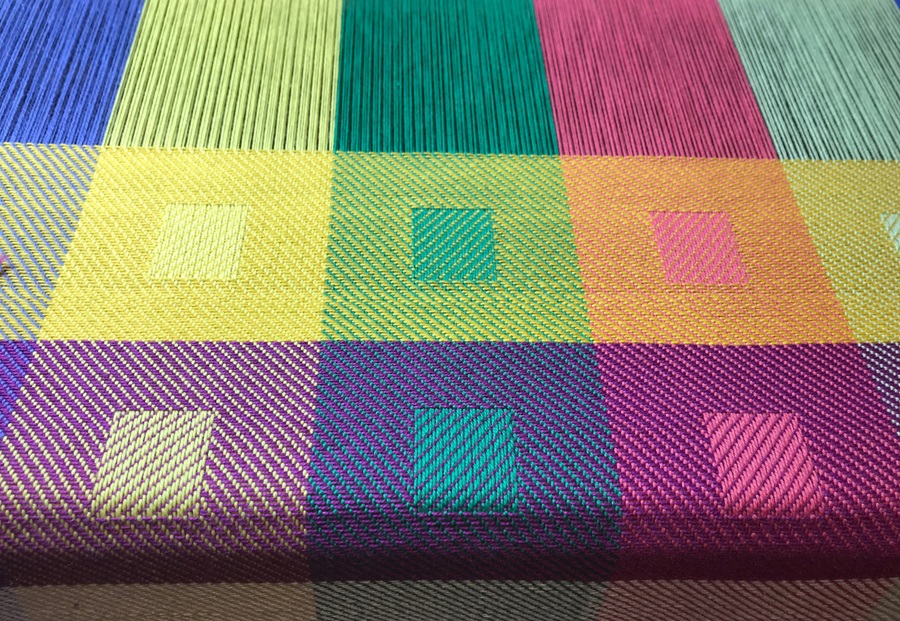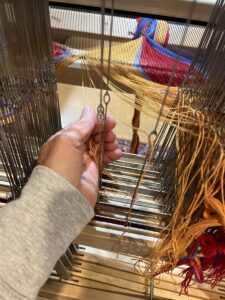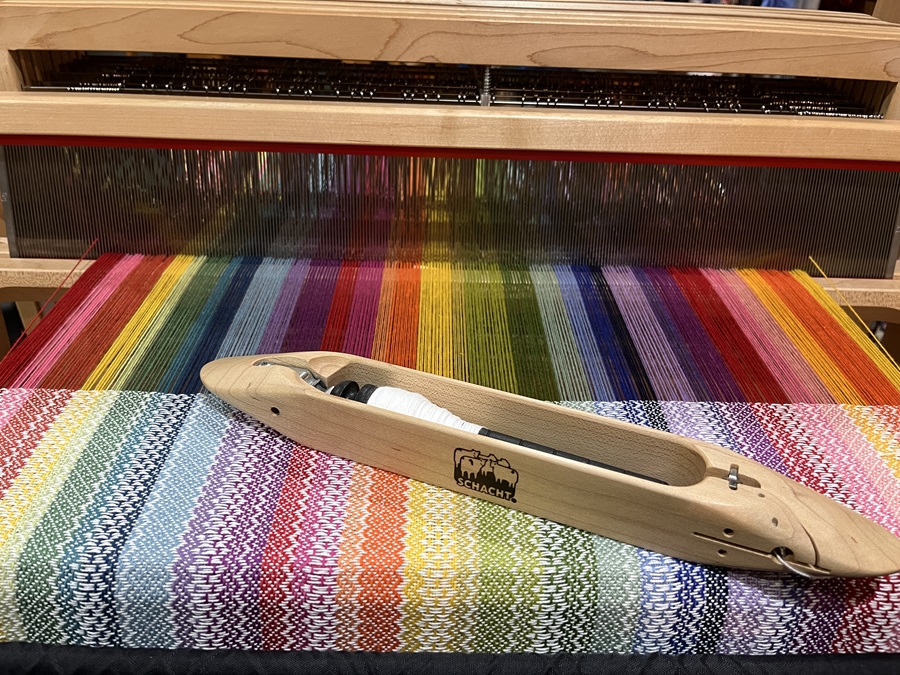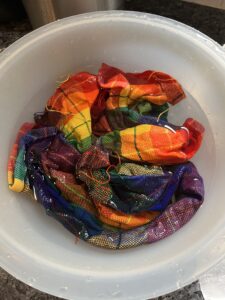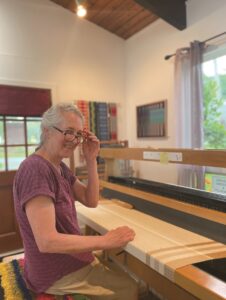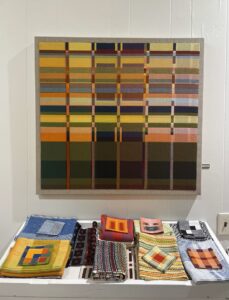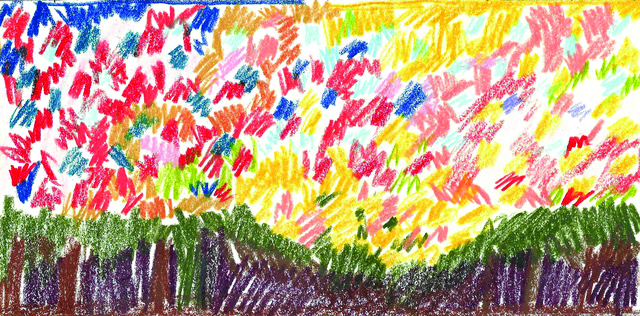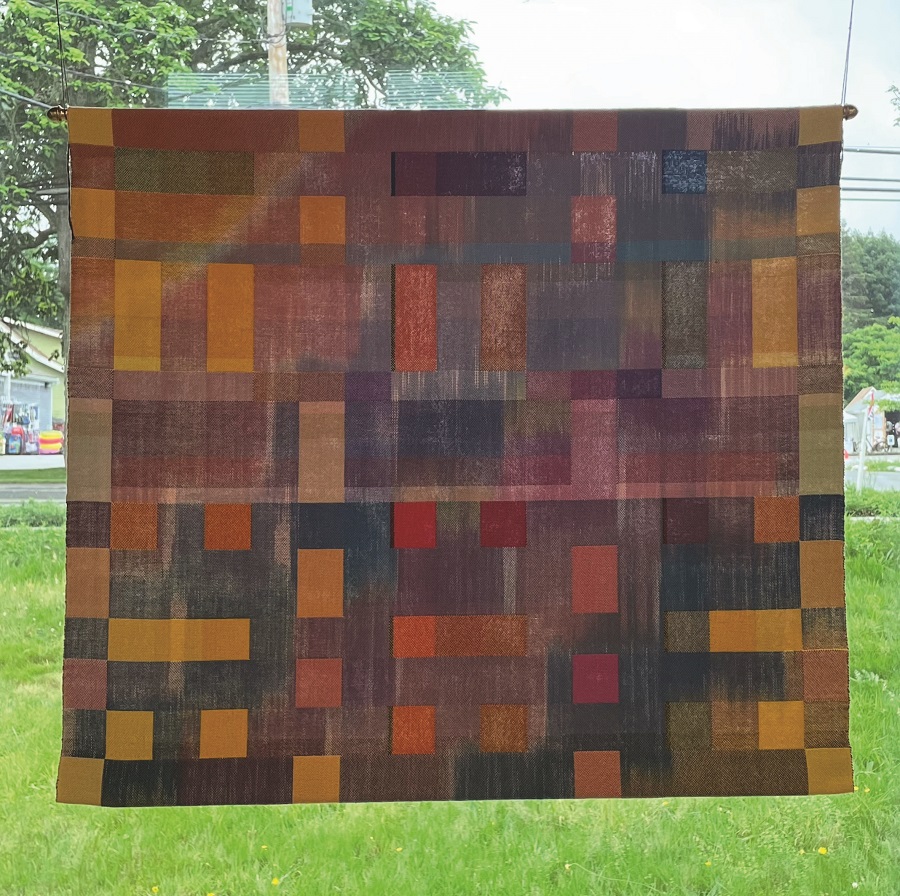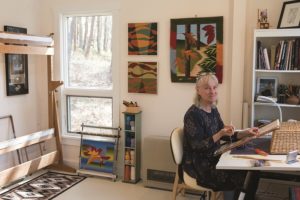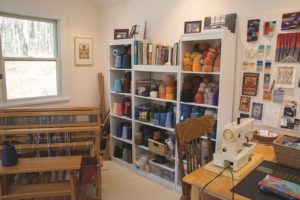As a child growing up in Des Moines, Iowa, Janet Beattie learned to sew from her grandmother. By fifth grade, she was making her own clothes. That experience gave her a lifelong love of textiles and the habit of using what she finds lying around. This month, Beattie will be exhibiting 25 of her artworks at the Commons in Provincetown in a show that expresses her love of fabric, fiber, and found objects.
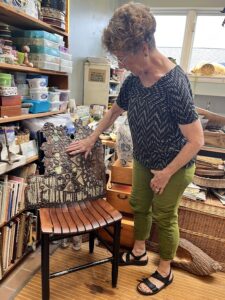
Beattie earned a degree in applied art at Iowa State University and moved from sewing to weaving. After college, she ran a weaving shop for five years.
“You set up the loom and you have certain colors, certain shades,” she says. “That’s your base, your canvas. You can do anything from there. You can use any type of yarn, anything you want. I think that’s how I learned my art.”
But Beattie found it hard to earn a living and decided to pursue a master’s degree in vocational rehabilitation. She moved from Iowa to Massachusetts and worked in the corporate sector for many years, putting her art aside until her mid-30s. Her friends and even her partner didn’t know she was an artist. Then she picked it up again.
“I realized I’d lost a piece of myself,” says Beattie. “It was freeing to be able to do something with my hands, to do art again after so many years. I had always thought about supporting myself and making money, and I decided that art was something I loved so much, I wanted to change my life.”
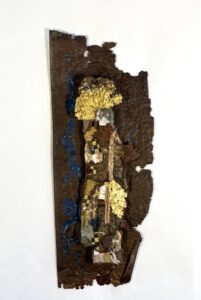
Beattie moved to Provincetown 12 years ago and set up a small studio on the top floor of Whaler’s Wharf on Commercial Street. It’s filled with piles of wood, reams of fabric, and shelves crammed with printed papers. Beattie still teaches weaving at the Council on Aging in Provincetown. Evidence of her background in weaving is everywhere in her studio. While she no longer uses a big Swedish loom, she weaves strips of fabric or embellished papers into many of her pieces that start with found wood or metal.
Given Beattie’s history, it is fitting that much of her work begins with reclaimed materials like driftwood or rusted metal that she finds on the beach during walks with her dog in Provincetown’s East End. “This stuff kept washing up at my feet, calling me, saying, ‘You can do something with this,’ ” she says.
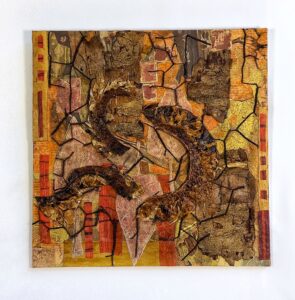
Scavenging for materials brings a sense of the Provincetown landscape into her work. She describes it as existing at “the intersection of nature, found materials, and spontaneous composition.”
Beattie works intuitively. She doesn’t sketch an initial design or develop a roadmap for how she’ll transform one of her found objects. Instead, surrounded by mounds of materials in the studio, she experiments with colors and shapes, wrapping and layering wood and metal with other found objects.
This technique is clear in Humanity, made of driftwood. Strips of yellow and blue hand-painted paper weave into the wood, forming a grid-like composition. Its upright shape evokes an ancient Torah scroll. Beattie says the colors “just called to me.” Only after she completed the work did she recognize the colors of the Ukrainian flag, which inspired the title.

Another piece, Uncle Benny’s Garden, began with a large piece of rough-edged scrap metal, a remnant of an old incinerator Beattie found in a back yard in Waltham. After using a rust inhibitor on the metal, she attached triangles of handmade paper, metal washers, and bits of green fabric. A border of alternating strips of fabric and paper gives the feeling of a fence or stalks of growing plants.
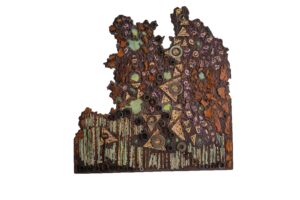
Though Beattie doesn’t aim to produce representational work, friends saw the shape of an animal in a piece of driftwood she found on the beach. The comments prompted Beattie to make Betty as a tribute to actress and animal lover Betty White. The wood, resembling a giraffe in profile, is adorned with twigs and cuttle shells and layered with lace and feathers. A pine cone sliced in half creates a set of perky ears.
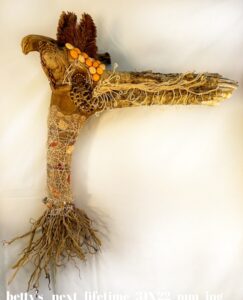
The territory of domestic craft, from which Beattie draws in her artwork, is contested ground among feminists. The Chilean artist and poet Cecelia Vicuna once remarked, “The spindle is the axis of the world.” Conversely, the French feminist Simone de Beauvoir lamented, “Woman sadly weaves the very nothingness of her days.”
Beattie sees little distinction between who she was as young person learning to sew and weave in Iowa and who she is now as an artist. “I’ve advanced into found objects, but it’s the same feeling I’ve always had,” she says. “I don’t think my art has changed that much. I just like texture.”
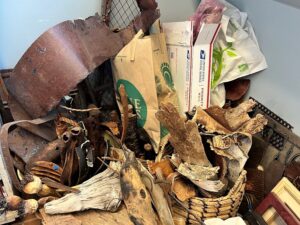
Worn, Weathered, Woven
The event: An exhibition of work by Janet Beattie
The time: Through Aug. 18; opening Friday, Aug. 8, 5 to 7 p.m.
The place: The Commons, 46 Bradford St., Provincetown
The cost: Free
